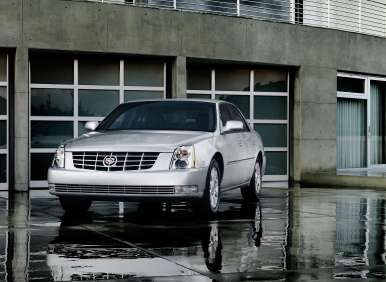Recent Articles
Popular Makes
Body Types
Cadillac Deville/DTS Used Car Buyer’s Guide
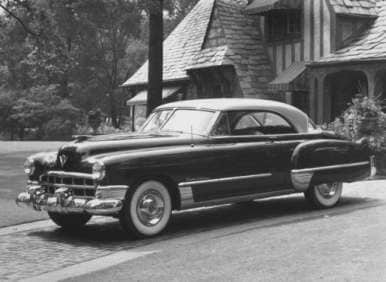
The DeVille name goes all the way back to 1949, when it was a trim package for the Cadillac Series 62 luxury coupe. The DeVille became a series in its own right in 1959, and was comprised of a Sedan de Ville, a Coupe de Ville, and in 1964, a de Ville Convertible (which ran until 1970).
The Coupe de Ville was discontinued in 1993, leaving only the Sedan de Ville. For the 1994 model year, the Sedan de Ville’s name was shortened to simply “DeVille”. In 2006, the DeVille became known as the DTS (DeVille Touring Sedan), which had previously been a trim package of the DeVille lineup in 1985.
For much of its lifetime, the flagship car of America’s flagship automotive brand, the Cadillac DeVille/DTS was an interesting dichotomy. For some, it represented the pinnacle of American automotive achievement, for others it represented everything wrong with the American automotive industry.
The very epitome of American luxury, the de Ville Cadillacs were large, powerful, and extremely comfortable. Further, General Motors would frequently use Cadillac to introduce new automotive innovations. The first electric starter in an automobile was found in a Cadillac. The first automatic transmission in an automobile was found in a Cadillac. The first production use of LED tail lamps, as well as the first application of night vision to an automobile, was on a Cadillac.
However, in the same breath, it could also be said Cadillacs handled poorly, lacked steering feel, used far too much fuel, and were much too large for their own good.
While the nine generations of DeVille models go all the way back to the 1940’s, this Buyer’s Guide will cover the two most recent generations of DeVille models built from 2000-2005 and DTS models built from 2006 to the model’s demise in 2011.
Cadillac DeVille Used Car Buyer’s Guide: 2000 – 2005
The 2000 Cadillac DeVille represented the first redesign of the model since 1994. Interestingly, it was also the last generation of the Cadillac DeVille, as the model became known as Cadillac DTS in 2006.
Power was supplied by 4.6L, double overhead cam, 32 valve, fuel injected V-8 engine producing 300hp and 295 foot pounds of torque on regular unleaded fuel. A four-speed automatic transmission routed the engine's output to the front wheels.
A broad array of new automotive technologies debuted with this generation of the DeVille. These include night vision, ultrasonic rear parking assist, magnetic power steering, an active suspension system, and traction control.
The look of the car—though evolutionary from the model that came before it—was trimmer, cleaner and sleeker. This gave it a sportier, more elegant, and more aerodynamic appearance. Even though it was shorter and narrower than the seventh generation model (1994 – 1999), the eighth generation DeVille’s wheelbase was longer. This enabled the new model to also boast more interior space.
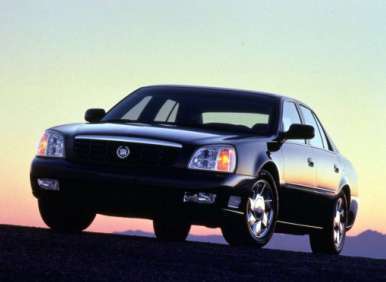
Cadillac Deville Used Car Buyer’s Guide: 2000
All new inside and out, the 2000 Cadillac DeVille benefited from a stiffer body, a revised version of Cadillac’s Northstar V8 engine, and as mentioned before, a host of cutting edge technological conveniences.
The 2000 Cadillac Deville was offered in three levels of trim; “Base”, “DHS”, and “DTS”.
The standard equipment list for the 2000 Base model Cadillac DeVille included; a digital instrument panel, power adjustable heated exterior mirrors, a keyless entry system, a lighted entry system, an automatic power retracting antenna, power brakes, a rear window defroster, tinted glass, and a dual zone automatic climate control system.
The Cadillac also featured a self-leveling suspension system, 16-inch alloy wheels, stability control, traction control, ABS at all four wheels, driver and passenger front airbags, front side airbags, and an antitheft alarm system. Cloth seating was standard, as was a split front bench seat with separate power adjustments for the driver and the front passenger.
The tilt steering wheel was trimmed in leather and housed controls for the audio system. There was a remote trunk release, cruise control, power steering, intermittent windshield wipers, power windows, power door locks, and automatic on/off headlights. The base Cadillac DeVille also featured daytime running lights, auto dimming exterior rearview mirrors, and an auto dimming inside rearview mirror. An AM/FM/cassette head unit drove the audio system.
Optional features for the 2000 Base model Cadillac Deville included an integrated garage door opener, a camper/towing package, a compact disc changer, a livery package (for chauffeur–driven capability), a power moonroof, rear side airbags, special factory paint, a power driver’s seat with memory, rear parking sensors, chrome door handles, leather upholstery, a cellular phone, the OnStar notification system, and an AM/FM/cassette/CD audio system head unit.
Moving up to the 2000 model year Cadillac DeVille DHS, bought all of the features of the Base model plus a tachometer, chrome wheels as standard equipment, leather upholstery as standard equipment, and the AM/FM/cassette/CD audio system head unit with Bose speakers and amplification.
DHS-specific options included an adaptive seat package, a compact disc changer, a heads up display, night vision, and the navigation system.
To all of the above, the DTS added bucket seats, a center console, an electronic suspension control system, fog lights, and rain sensing windshield wipers as standard features.
The 2000 Cadillac DTS options list largely mimicked the DHS options list.
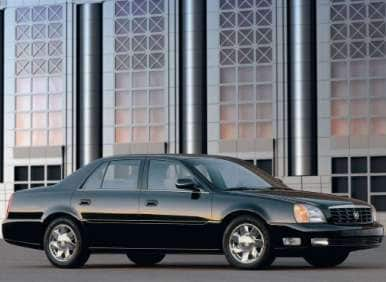
Cadillac Deville Used Car Buyer’s Guide: 2001
Stability control became optional for the Base model DeVille, navigation was made optional for both DHS and DTS, and a tire pressure monitoring system was incorporated.
The Deville's suspension system was tweaked to improve ride quality, leather became standard across the board, the navigation system got voice recognition capability, satellite radio was introduced, and a new Bose audio system was specified. A DVD-based video entertainment system was introduced as an option for DTS and DHS. Dual stage air bag inflators were incorporated, the oil change interval was increased for the Northstar V8, and an all-new Cadillac badge was adopted.
Navigation and the DVD player trickled down to the base model’s options list. Turn signal repeaters were installed in the exterior rearview mirrors. And, satellite radio became an option for all DeVille models.
Cassette players were dropped in favor of CD player head units, night vision was added to the base DeVille's option list, an electronic parking brake release was adopted, heated and cooled front seats along with a heated steering wheel replaced the adaptive front seats, and the Deville was offered in an armored version on either the standard or the stretched wheelbase.
Over the lifetime of the eighth generation Cadillac Deville, its product planners took an incremental approach toward improving the model. By the end of its run, the model was thoroughly up-to-date in terms of technological equipment, but dynamically the Cadillac was still woefully behind its competitors.
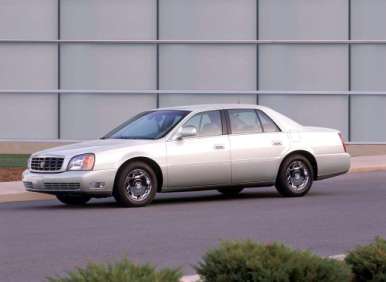
Cadillac DTS Used Car Buyer’s Guide: 2006 - 2011
Revealed to the public in 2005 at the Chicago Auto Show, though the nomenclature changed, the 2006 Cadillac DTS was really little more than a refreshed 2005 Cadillac DeVille.
For the ninth generation car, two engines were offered; the base powerplant was a 4.6L V8 capable of 275 hp and 292 foot-pounds of torque. The “performance” engine was a 291hp/286 foot-pounds version of the 4.6L V8. Regardless of engine choice, the front-wheel-drive powertrain was fed by four-speed automatic transmission.
Even though the DTS proffered a wealth of cutting-edge tech, it was still lacking in terms of build quality, over the road dynamics, and ironically even the Cadillac’s prestige factor was diminished when viewed next to its competitors from Acura, Lexus, Infiniti, Mercedes-Benz, BMW, and Audi.
However, there was no arguing with the quietness, spaciousness and comfort of the DTS. The car also offered well over 18 cubic feet of space—in the trunk! Rear seat passengers had just as much legroom as those up front and the DTS was capable of seating up to six people.
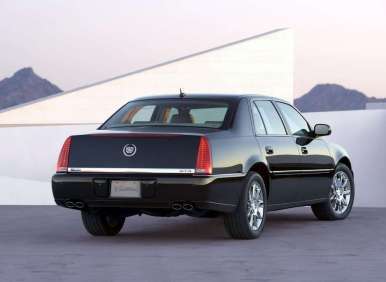
Cadillac DTS Used Car Buyer’s Guide: 2006
Offered in four states of trim, creatively designated; “ Luxury I”, “Luxury II”, “Luxury III”, and “Performance”; standard features for the 2006 Cadillac DTS Luxury I included 17-inch alloy wheels, a temporary spare, intermittent wipers, a rear defogger, cargo tiedowns, eight-way power adjustable driver and front passenger seats with power adjustable lumbar support and height adjustment, leather upholstery, and bucket front seats.
There were remote power door locks, heated exterior power mirrors, and four one-touch power windows. Cruise control, a front console which storage, front and rear cup holders, front door pockets, front seatback storage, and a remote trunk release were also included in the base price.
The Cadillac DTS Luxury I retained accessory power when the engine was shut down. Its tilt-adjustable, leather-wrapped steering wheel housed audio and cruise controls in addition to controlling the speed proportional power steering rack. The three-zone climate control system featured interior air filtration. Simulated wood trim enhanced the center console, the dashboard, and the doors. There was a trunk light, front and rear reading lights, dual illuminating vanity mirrors, turn signal repeaters integrated into the outside rearview mirrors, and an electrochromatic inside rearview mirror.
The Cadillac featured an external temperature display, a trip computer, tachometer, a compass, and a low fuel level warning indicator. An AM/FM in-dash single CD player head end drove the eight-speaker audio system with CD MP3 playback capability. The unit contains speed sensitive volume control and the radio data system. The OnStar telecommunications service was supplemented with the voice directions navigation system.
The safety and security suite included ABS for all four disc brakes, front and rear head airbags, dual front side-mounted airbags, child seat anchors, a remote antitheft alarm system, rear door child safety locks, cornering lights, fog lights, daytime running lights, dusk sensing and auto delay off high intensity discharge Xenon headlights, and an engine immobilizer. There was also traction control, an emergency interior trunk release, a post collision safety system, and tire pressure monitoring.
The Luxury II DTS featured all of the above plus; XM satellite radio, heating for the driver and front passenger seats, memory settings for the audio system, drivers seat, and climate control system for two drivers.
The 2006 Luxury III Cadillac DTS added front and rear parking sensors, a heated leather and wood steering wheel, floor mats for the front and rear passenger compartments as well as the trunk, front and rear reading lights, a Bose audio system, and an in-dash CD changer.
The 2006 Cadillac DTS performance sedan featured 18-inch alloy wheels with performance-oriented tires, the 291hp V8 engine, a more aggressive calibration for the four-speed automatic transmission and suspension system, stability control, massaging seats for the driver and front passenger, and electric speed-proportional power steering—in addition to all of the other features listed above.
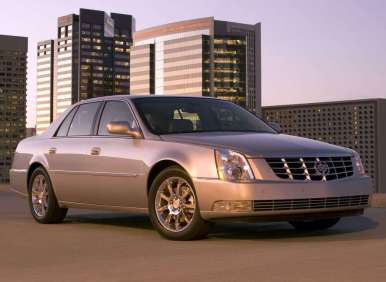
Cadillac DTS Used Car Buyer’s Guide: 2007
The Luxury III trim was dropped for 2007, leaving the DTS available in four trim levels: Base, Luxury I, Luxury II, and Performance.
Dual-zone automatic climate control, leather upholstery, OnStar, bi-Xenon HID headlamps, a power-adjustable front seat for the driver, remote vehicle start, a CD/MP3 player, and satellite radio were highlights of the base model.
Heated and cooled front seats, heated rear seats, a heated steering wheel, and park assist were added to the Base model’s equipment list to get to the Luxury I trim level.
To all of that, Luxury II added triple-zone climate control, a six-disc CD changer, power lumbar adjustments front and rear, a power tilt-and-telescopic steering wheel, driver’s-seat memory positioning, a power rear sunshade, rear vanity mirrors, and chrome wheels.
The “sporting-oriented” Cadillac DTS Performance model continued with the more powerful V8 and performance-oriented transmission programming, 18-inch wheels and a firmer suspension system with Magnetic Ride Control.
Options included adaptive cruise control, a sunroof and a navigation system.
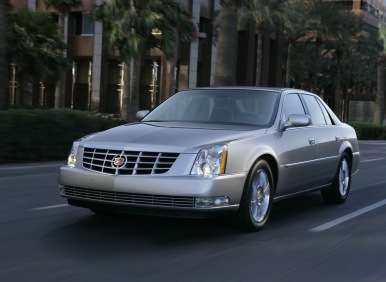
Cadillac DTS Used Car Buyer’s Guide: 2008
The Luxury III designation was brought back with chrome wheels, power-folding mirrors, a power rear sunshade, a Bose audio system with a six-disc CD changer, power lumbar support for all outboard seats, massaging front seats, a power tilt/telescoping steering wheel, driver’s seat memory, rear vanity mirrors and auto-dimming headlights. Blind spot warning was added to the Performance model. Options for the other models included adaptive cruise control, lane-departure warning, the aforementioned blind-spot monitoring system, a sunroof and a navigation system.
Bluetooth was added, as was XM’s real-time traffic reporting—as an option.
Luxury II and III were combined into a single offering called Premium Luxury. That package bundled chrome wheels, auto-dimming headlights, power-folding mirrors, a power rear sunshade, a power tilt and telescoping steering wheel, a Bose audio system with a six-disc CD changer, massaging front seats, power lumbar support for all four outermost seats, and rear vanity mirrors.
A Platinum Edition package was introduced for Premium Luxury and Performance models endowing the big Caddy with chrome wheels, a chrome grille, special leather, ash wood trim, leather trim on the center console and instrument panel, French-stitched door inserts, an Alcantara headliner, the navigation system, and a sunroof.
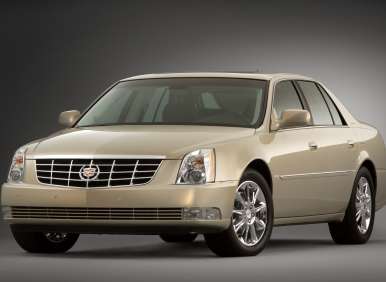
Cadillac DTS Used Car Buyer’s Guide: 2010
For 2010, the Platinum Package became a trim line, the Performance model was dropped, and the varying grades of the Luxury packages were morphed into Luxury and Premium packages.
With that said, for model year 2010, the Cadillac DTS was equipped as follows;
The Base DTS came with 17-inch alloy wheels, high intensity discharge Xenon headlights, foglights, a remote engine start function, a dual-zone automatic climate control system, leather upholstery, power-adjustable front seats, Bluetooth hands-free connectivity, OnStar, and an eight-speaker audio system with a CD-based stereo head unit.
The Luxury model added 17-inch chromed wheels, a sunroof, audible front and rear parking assistance, and an auto-dimming electrochromatic driver’s-side exterior rear-view mirror. A three-zone climate control system, heated and ventilated front seats, heated rear seats, a heated steering wheel, driver’s seat memory settings, and an eight-speaker Bose audio system with a six-disc CD changer rounded out the Luxury model’s kit.
To get to the Premium trim level, Cadillac’s product planning team specified a body-colored grille, power lumbar adjustment and massage for the front seats, a power-actuated tilt and telescoping heated steering wheel trimmed in leather and wood, burled walnut interior accents, and a DVD-based navigation system with real-time traffic updates from XM.
Comprising the Platinum model’s offerings was the more powerful version of the 4.6L V8, the electronic Magnetic Ride Control suspension system with18-inch wheels, a leather-trimmed dash, and an Alcantara headliner (a material which looks and feels similar to suede). The Platinum package also included lane-departure and blind-spot warning systems.
The Cadillac DTS went into its last year of production largely unchanged from the 2010 model year.
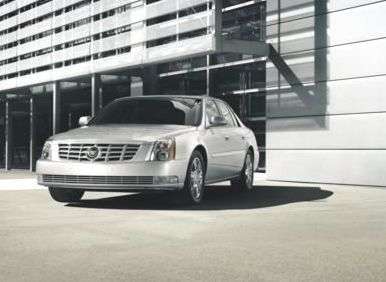
Cadillac Deville/DTS Used Car Buyer’s Guide: Summary
In many respects, the Cadillac DeVille/DTS was one of those models driving enthusiasts would consider representative of all that was wrong with the old Cadillac. By the end of the DTS run, every other luxury car offering on the road either equaled it or surpassed it. A precipitous fall indeed for the flagship model of the brand that was once considered the standard of the world.
Thing is, times changed and what most drivers were looking for changed as well. Starved of capital investment, toward the end, Cadillac did the best it could to keep the DTS relevant, but it was soon proven an all-new model was the only way to compete.
With that, the DTS was discontinued after 2011.
That said, everybody out there ain’t looking for those “European” dynamic attributes in their luxury cars. If you value a quiet and smooth ride over outright cornering prowess; or you prefer say, a luxurious living room-like interior over highly supportive seats; or a palatial roster of standard luxury features over sheer dynamic ability, you need look no farther. A Cadillac DeVille/DTS is, in all probability, exactly what you're looking for.
Be apprised however, these are pretty complicated cars, and they routinely are the first to incorporate many highly tech-oriented features. And yes y’all, that stuff breaks. So you’ll do well to make sure you subject the Cadillac of your interest to a very thorough pre-purchase inspection by a trusted professional independent mechanic, one familiar with the systems applied to the flagship Cadillac.
You’ll also want to continue to cruise the “Net, and gather information from the Cadillac owner’s forums about the DTS/DeVille model of your interest. While you’re online, go ahead and run a vehicle history report against the VIN of each particular car that interests you. This research will help ensure you acquire the cleanest, most well maintained example of the Cadillac DeVille or DTS you can find.
